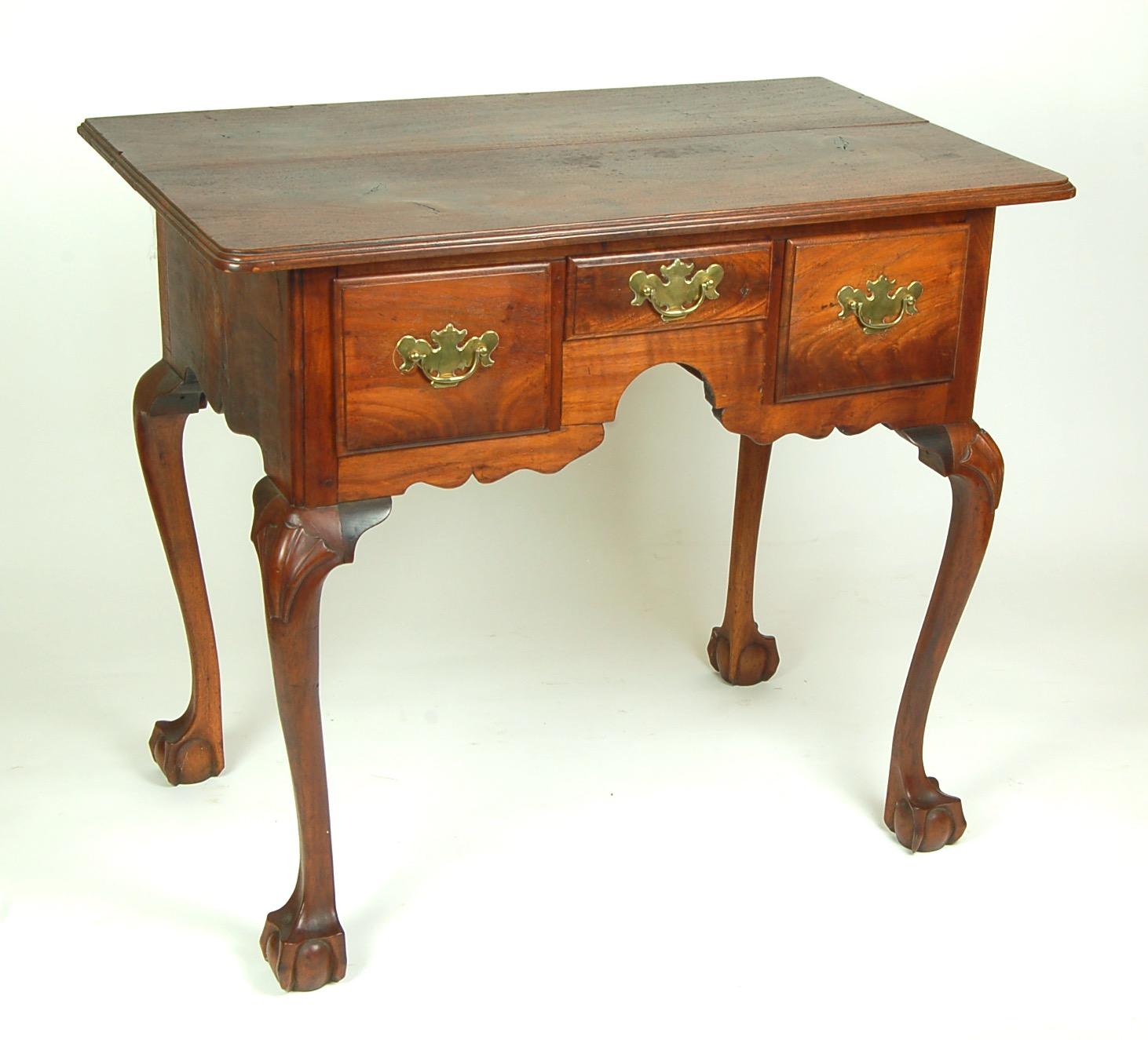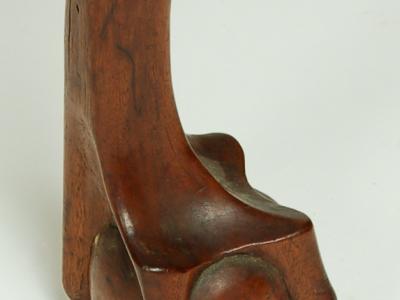Dressing table
Probably central New Jersey
1755-1790
Measurements
28-5/8 in x 33-1/4 in x 20-7/8 in
Materials
Walnut; hard pine (secondary woods)
Credit Line
Historic Odessa Foundation, gift of H. Rodney Sharp
Accession Number
1958.3240
Condition Notes
All of the knee brackets are replacements as are the brasses.
Provenance
Ex coll. H. Rodney Sharp
Comments
The dressing table stands on four cabriole legs ending in claw-and-ball feet. The carved feet resemble a New York foot variant in that the rear talon drops straight to the floor without articulation of the knuckles and the foot itself appears blocky. Shells carved on the knees of the front legs have only five rays: three convex with two alternating concave rays. The carcass has three small side-by-side drawers; it lacks the full-width drawer across the top. The front skirt has a high center arch flanked by shallow double-ogees, a decorative feature of some New Jersey and New York furniture. The front skirt is a single board cut to shape. (The left side has split along the short grain.) The front corners of the case have a large quarter-round molding cut into them; the case sides have double-ogee undercutting. All of the knee brackets appear to be replacements. The two-board top has a stepped-molded edge and rounded front corners. The edge molding runs along the back edge as well. Oxidation of the underside of the two top boards as well as glue block evidence suggests that the top is original to the case.
The three dovetailed drawers, which are all the same width, have replaced brasses that cover single holes for centered drawer pulls. Those single pulls may have been original. Drawer construction is curious in having drawer bottoms that fit into channels cut into all four drawer sides, rather than the almost universal practice of nailing the back ends of the drawer bottoms to the undersides of the drawer backs. The drawer bottoms are feathered on all four edges. Another curiosity in drawer construction lies in the lengthy and deeply scribe lines to guide the cutting of the dove tails on the drawer sides to fit over the pins on the drawer backs.
This dressing table is very similar in appearance to one made of cherry and reportedly owned in the Wardell family of West Long Branch in Monmouth County, New Jersey. See Elizabeth Wyman, “Furniture of Monmouth County,” Antiques (July 1948): 44-45, fig. 2.


